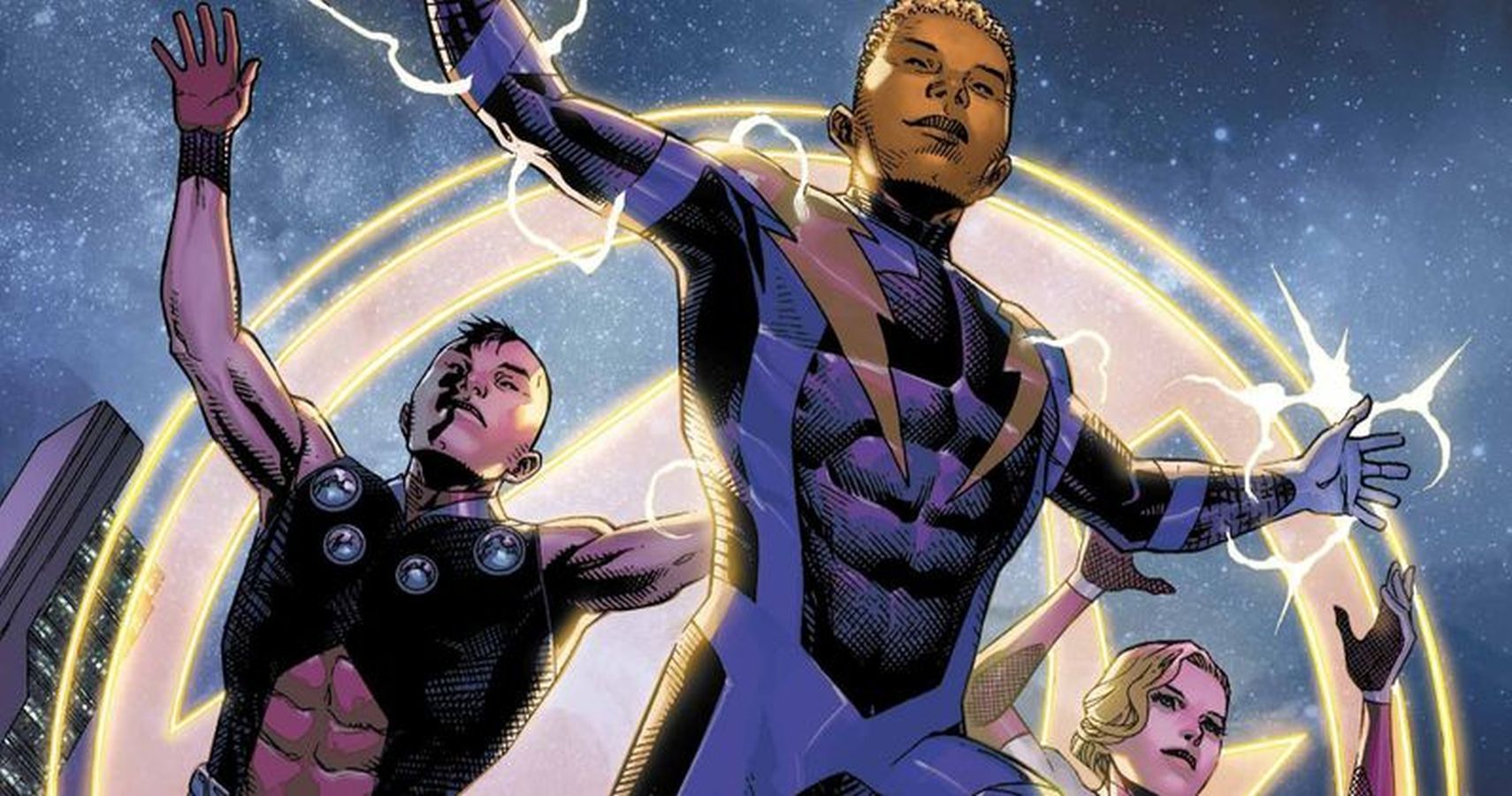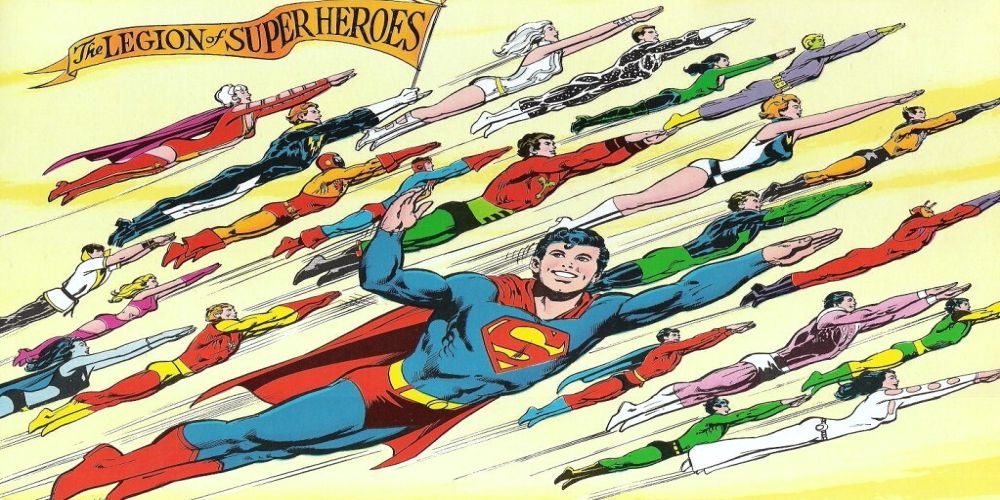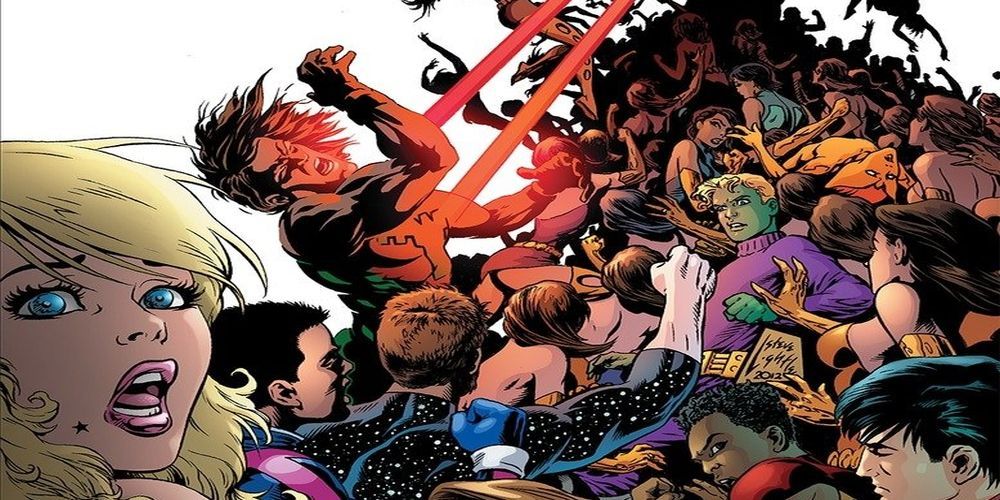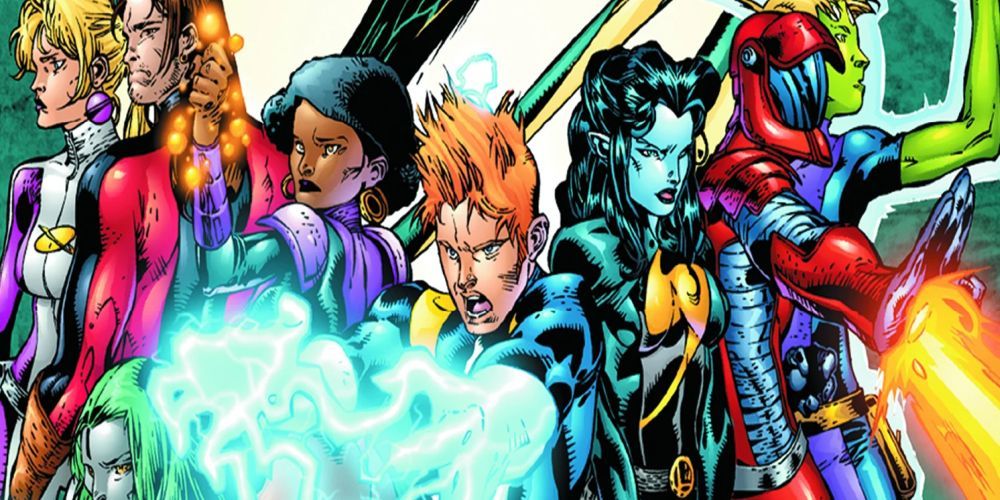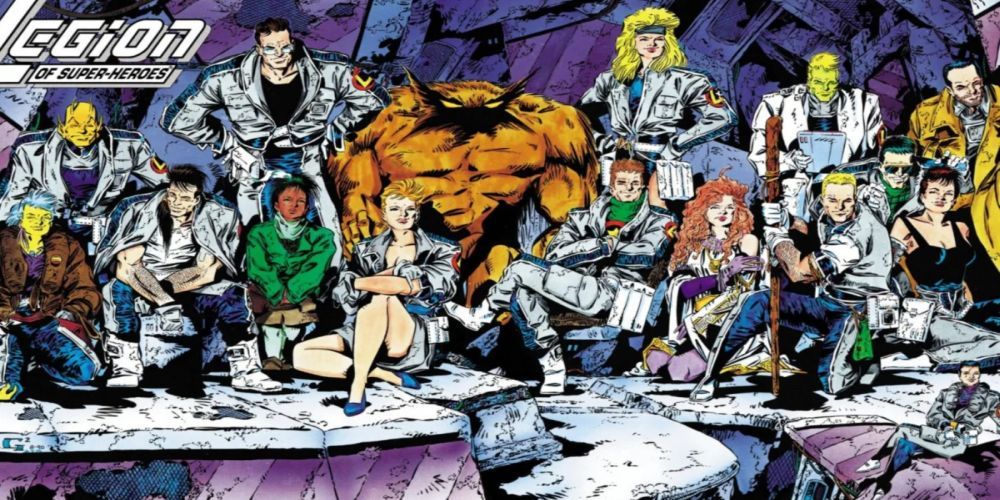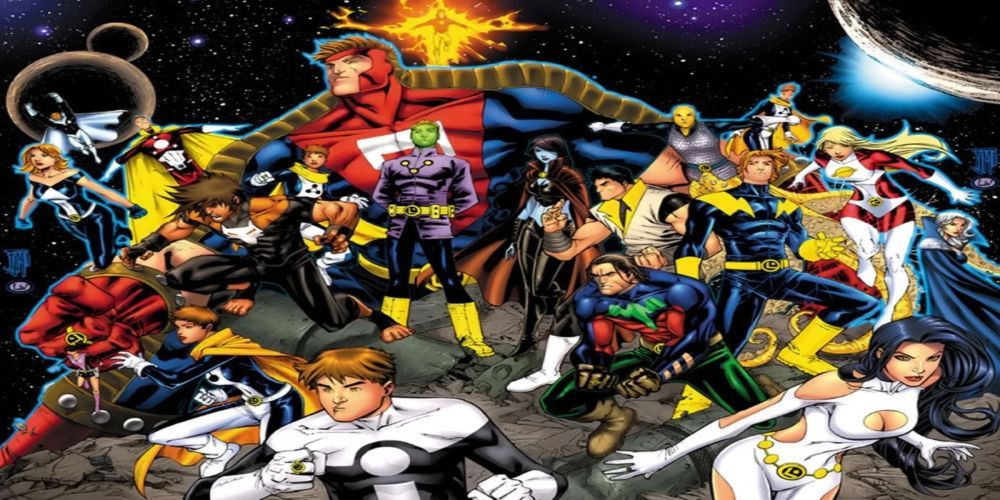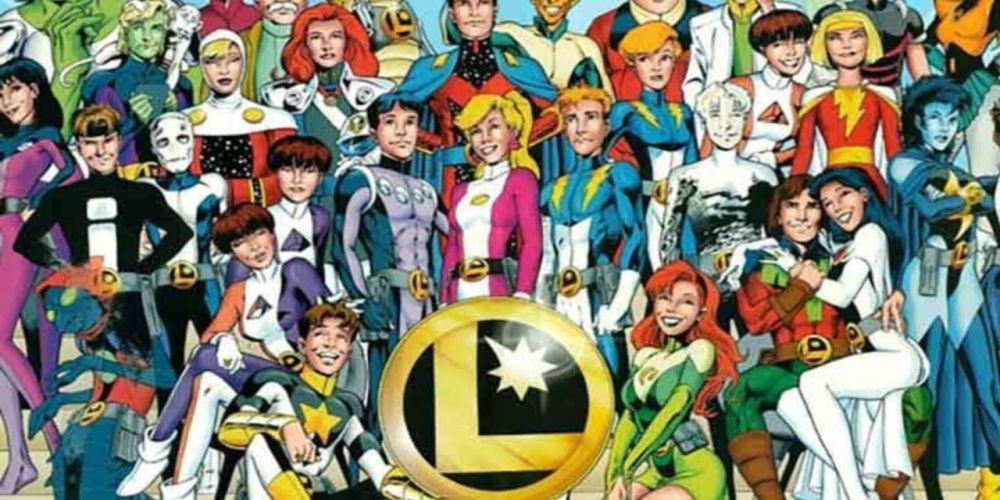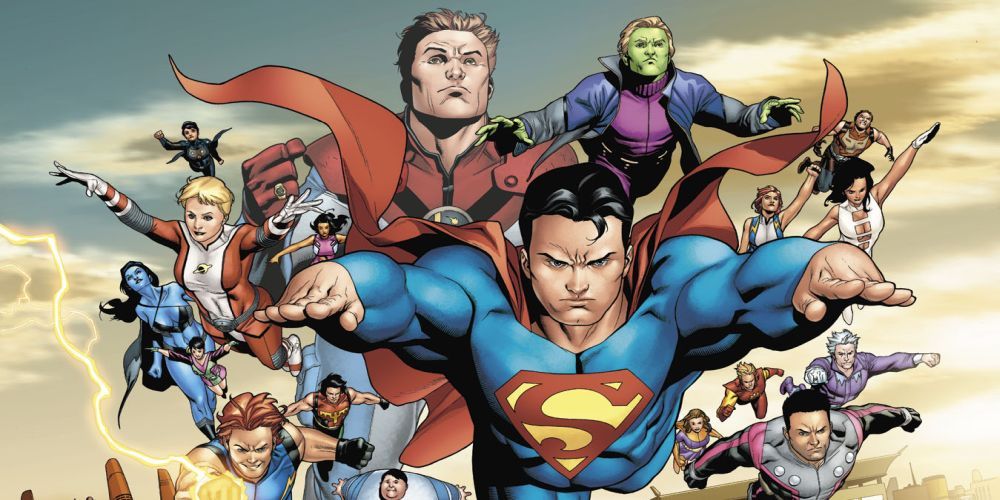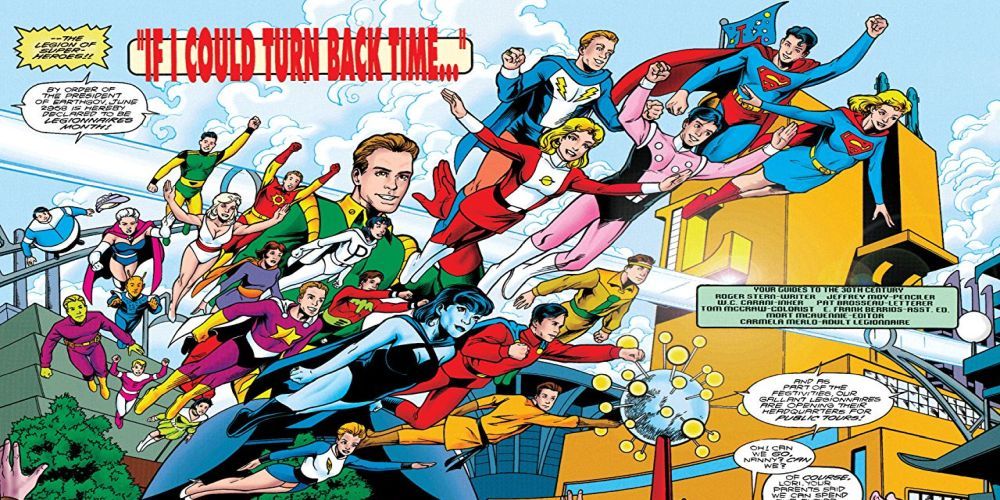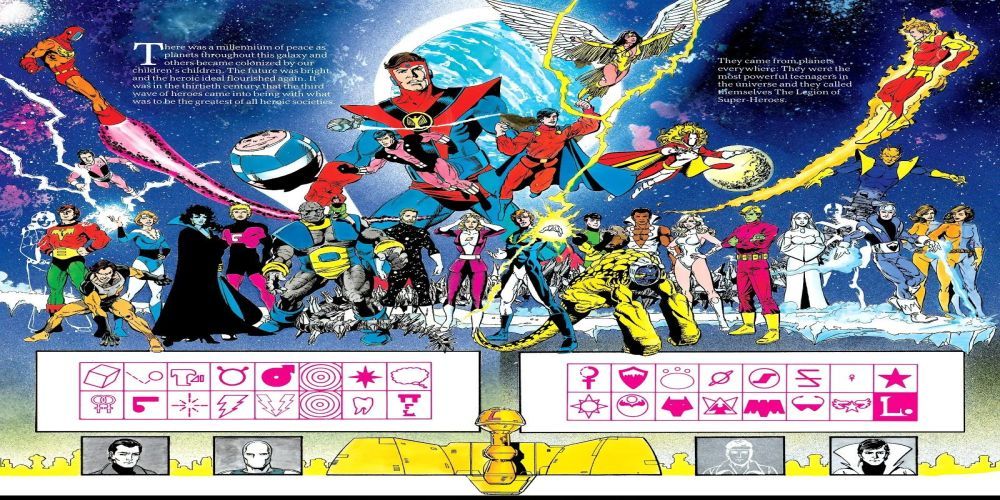Saying the Legion of Super-Heroes is just a "team" is a misnomer. It's the largest one in the comic book universe, encompassing nearly three dozen talented individuals across the galaxy. And that doesn't include moments when one Superboy or another has joined their ranks.
In addition to their size, the LSH is the oldest super-team in the modern age. In fact, it pre-dates the creation of the Justice League by two years (1958 and 1960, respectively). Needless to say, there have been numerous team configurations and creators since then. Some incarnations had brief histories while others lasted for decades. To sort it out, here are the top Legion of Super-Heroes teams through the ages, ranked.
10 The Bendis Era (2019)
It's too early to provide a true ranking on the latest incarnation of the LSH. Suffice it to say, Brian Michael Bendis knows how to write team books as well as emotionally wrought teenagers. So, it should be in good hands.
The best news is Bendis knows the long history of the LSH. He's made some tweaks to the team and their home base while maintaining the group's legacy. According to Doomsday Clock #12, this includes knowledge of working with Superboy/Superman in the past. How the human Red Bull of comics addresses this has yet to be determined.
9 The Bronze Age Era (1973-1981)
Consider this the YA era of the Legion. After years of dealing with galactic threats in Adventure Comics, the LSH took over Superboy's book, eventually kicking him out altogether in the late 1970s. Before then, there was a good deal of change.
For instance, the popular heroes Blok, Wildfire, and Dawnstar were introduced. Bouncing Boy and Lightning Lad walked down the aisles with their respective partners (Duo Damsel and Saturn Girl). In addition, everyone got a new costume -- most of them with less material than their previous versions. This was sprinkled with a good amount YA angst that made readers wonder how many soliloquies could be added to one issue.
8 New 52 Era (2011-2014)
Overall, not much happened to the LSH when the Flash re-jiggered the timeline. While the team members became younger, their pre-Flashpoint adventures continued. So, let's talk about the next era.
Excuse me? You say the New 52 Legion didn't include a young Clark Kent in their ranks? And seven Legionnaires returned to 21st century Earth to save the future? Oh, well, yeah, sure ... those things happened. However, once the series ended, it seems like everyone forgot about this team. Especially when Justice League 3000 premiered. It wasn't until Saturn Girl's appearance in Rebirth that a flicker of hope returned.
7 Dark Era (1999-2004)
In 1999, writers Dan Abnett and Andy Lanning came aboard with penciler Olivier Copiel to shift the ground under the post-Zero Hour LSH. When it was all over, the United Planets nearly collapsed, and a number of Legionnaires disappeared into a spatial rift. The mini-series of Legion Lost and Legion Worlds told tales of recovery in a galaxy that wasn't quite apocalyptic but certainly dark.
This continued in their new Legion series. With a different purpose and headquarters, the team reunited to restore the U.P. and battle futuristic villains like ... um ... Ra's al Ghul and Darkseid? Him, again? Doesn't he have anything better to do than beat up teenagers?
6 Five Years Later Era (1989-1994)
There's no doubt writer and artist Keith Giffen had an enormous impact on the Legion of Super-Heroes. Not only in his first run in the early 80s but when he returned late in the decade to move their history forward five years.
Unlike Abnett and Lanning, the Five Years Later era of the LSH was apocalyptic. Earth was run by the Dominators, the United Planets was still recovering from The Magic Wars, and Cosmic Boy wore a dirty trench coat for a costume. Then, because Superboy had to be taken out of their history, Mon-El became the inspiration for the LSH as the hero Valor. In other words, it was messy.
5 Threeboot Era (2004-2009)
After the Abnett-Lanning era of the Legion ran its course, writer extraordinaire Mark Waid returned to the Legion's fold with Barry Kitson and provided another reboot of the team. In this version, most of the characters received their original Boy/Lad/Lass/Girl/They codenames. After that, things changed.
Instead of being the darlings of the Science Police and United Planets, the LSH were the troublemakers in an emotionally repressive society. So, in addition to battling the Fatal Five, they also embarked on a number of social reforms to shake up the younger population. They even had a cult-like group of followers called the Legionnaires. In other words, they were the 31st century version of BTS.
4 Zero Hour Era (1994-2000)
The other reboots might not have occurred if Zero Hour didn't jigger the timeline in 1994. However, it was needed. After the original creators of the Five Years Later era of the LSH left, the comic went off the rails. The Legion was re-aged by Glorith and turned into outlaws. It was up to Mark Waid to make things right.
He did so through a restart of the series in both Legion of Super-Heroes and the companion Legionnaires title. Out of all the reboots, this one stuck around for approximately six years and became the status quo. Sadly, the light Waid brought along was extinguished toward the end of the series' runs.
3 Infinite Crisis Era (2007-2011)
What Crisis on Infinite Earths undid, Infinite Crisis re-did. As the ramifications of Alexander Luthor's plans reverberated across the multiverse, certain events were restored. The result was two-fold for Superman -- He was Superboy at one time, and he participated in adventures with the Legion.
The "Superman and the Legion of Super-Heroes" storyline by the Doomsday Clock team of Geoff Johns and Gary Frank reintroduced this concept and the pre-Crisis LSH to 21st century. The older Legionnaires were so popular they returned to a new Adventure Comics series and, eventually, their own book.
2 The Adventure Comics Era (1959-1969)
If not for the Legion's decade-long run in Adventure Comics, their legacy would be much different. Once they took the title over on a full-time basis, the group was able to expand not only their ranks but also flesh out their personalities. Plus, we got to see the Legion of Super-Pets.
Many of the events that took place during this time, like the battle with Computo, death of Ferro Lad, and resurrection of Lightning Lad, reverberated in future Legion books. Furthermore, if it wasn't for this cavalcade of teen superheroes, a 14-year-old writer named Jim Shooter may have never gone further than writing letters to DC Comics.
1 The Paul Levitz Era (1981-1989)
Like Marv Wolfman with The New Teen Titans, Paul Levitz will always be connected to the 80s version of the Legion. Though his start was rough -- the young adult angst was everywhere -- he found his groove when he got together with his co-plotter and artist -- Keith Giffen.
It was the work of those two creators that completely changed the look and feel of the Legion. They gave us "The Great Darkness Saga," the #300 issue of Legion of Super-Heroes, and the introduction of the Baxter (non-newsprint) series. After Keith left, Levitz was paired with Steve Lightle and Greg LaRocque to continue the series through the retirement of the Legion's founders, introduction of new characters, and a battle with Universo. A true golden age for the team.

